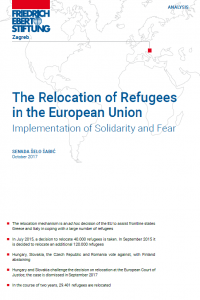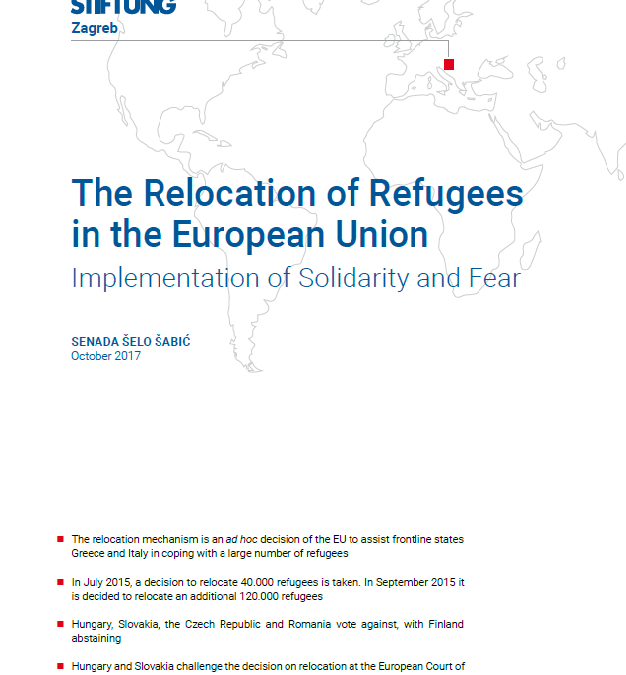
Publisher: The Friedrich-Ebert-Stiftung Regional Office in Zagreb
Year: 2017
ISBN 978-953-7043-62-9
The relocation mechanism is an ad hoc decision taken by the EU to alleviate part of the burden from frontline states, Italy and Greece, which have been coping with a large number of arriving migrants. In July 2015 a decision to relocate 40 000 refugees was taken, followed by a decision in September 2015 to relocate an additional 120 000 refugees. Hungary, Slovakia, the Czech Republic and Romania voted against while Finland was abstained. This analysis, authored by Senada Šelo Šabić, presents statistics on the implementation of the relocation plan. Within the last two years, less than 30 000 refugees were relocated. In addition to a table and an infographic showing data for all EU member states and volunteer countries like Switzerland and Norway, the dynamic in implementing the relocation plan is presented in more details by looking at examples of Finland, Germany, Hungary, Slovenia and Croatia. In conclusion, the author identifies technical hurdles and fear of immigration as obstacles in implementing the relocation plan.




